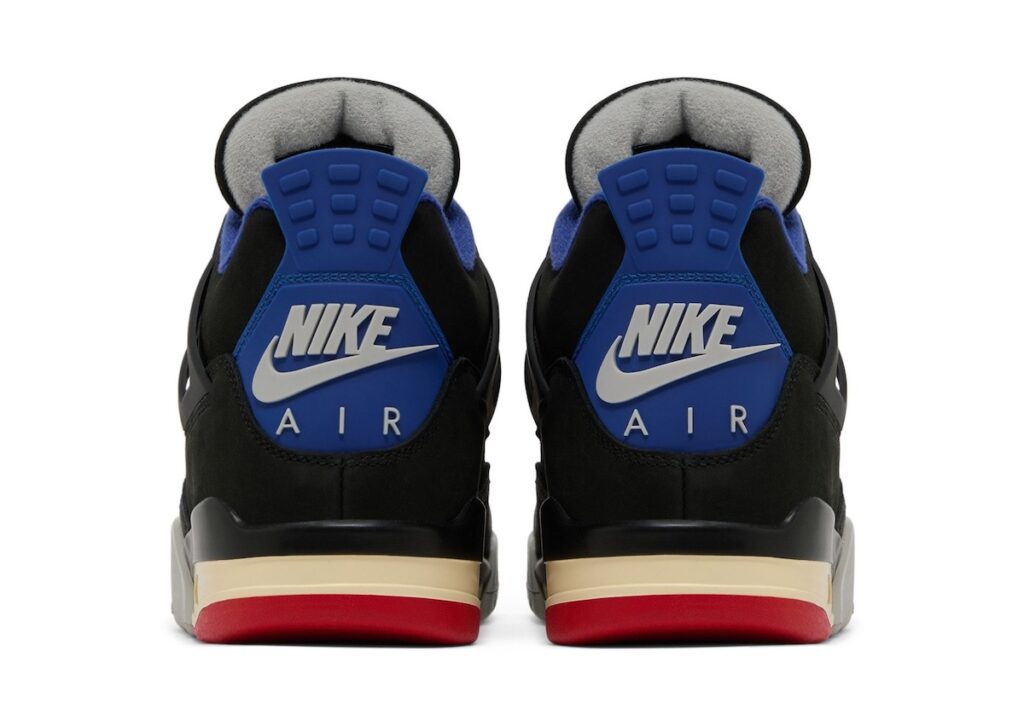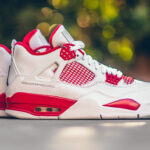“`html
Hunting for Air Jordan 4 Rare Air: A Price and Deals Guide
The Air Jordan 4 “Rare Air” is a unique iteration of the iconic Air Jordan 4 silhouette, often featuring distinct branding elements like “RARE AIR” text beneath removable tongue patches, offering a twist on a beloved classic. When you’re looking to add a coveted pair like the Air Jordan 4 “Rare Air” to your collection, understanding the market and knowing where to look for the best prices is essential, as costs can vary significantly across different sellers and platforms.
Retailer Comparison
The Air Jordan 4 “Rare Air” series, including colorways like the “Laser Black Gum” (released around 2017) and other versions, are no longer available through standard retail channels at their original manufacturer’s suggested retail price (MSRP), which was likely around $190-$200 at the time of their release. Primary retailers like Nike, Foot Locker, or Champs Sports would have stocked them initially, but due to their age and limited nature, they are now exclusively found on the secondary or resale market. Therefore, a direct retail price comparison for new stock from authorized dealers isn’t currently feasible.
Resale Market Analysis
The resale market is where you’ll find the Air Jordan 4 “Rare Air.” Prices here are dynamic and influenced by rarity, condition, size, and demand.
- StockX: For the Air Jordan 4 Retro “Rare Air Laser” (Black/White/Gum), prices can range from approximately $300 to over $550 for new, deadstock pairs, depending on the size. Other “Rare Air” versions, if listed, will have their own distinct price ranges.
- GOAT: Similar to StockX, GOAT lists new and used pairs. You might find the “Rare Air Laser” from around $280 (for used with some wear) to $500+ for new pairs. Prices fluctuate based on condition and size availability.
- eBay: eBay offers a wider spectrum of prices, as it includes individual sellers and consignment stores. You might find listings ranging from $250 to $600+. Authenticity can be a greater concern here, so buying from reputable sellers with authentication guarantees is crucial.
Factors affecting resale prices include:
- Condition: Brand new (deadstock) pairs with original boxing command the highest prices. Used pairs vary based on wear and tear.
- Size: More common or popular sizes often have higher demand and thus higher prices.
- Rarity of Specific Colorway: Some “Rare Air” iterations might be more limited than others.
- Seller Reputation & Authentication: Verified authentic pairs from reputable sellers or platforms with authentication services fetch higher prices and provide peace of mind.
- Market Trends: General sneaker market hype and specific model popularity can influence pricing.
Tips for Finding Deals
Scoring a deal on a sought-after sneaker like the Air Jordan 4 “Rare Air” requires patience and strategy:
- Compare Across Platforms: Don’t settle on the first price you see. Check StockX, GOAT, eBay, and even reputable consignment shops.
- Set Price Alerts: Some platforms allow you to set alerts for when a sneaker in your size drops to a certain price.
- Consider Used Condition: If you’re okay with a gently used pair, you can often save a significant amount. Ensure you see detailed photos and descriptions.
- Look for Offers: On platforms like eBay, some sellers accept offers, so you might be able to negotiate a lower price.
- Follow Reputable Sellers: Some sellers or consignment stores run occasional sales or promotions.
- Beware of Scams: If a price seems too good to be true, it probably is. Stick to platforms with robust buyer protection and authentication.
- Factor in Fees: Remember to include shipping costs, sales tax, and platform fees (like StockX’s processing fee) when comparing final prices.
Authenticity Guide
Spotting fake Air Jordan 4s, including the “Rare Air” models, is crucial. Here are key areas to inspect:
- Overall Shape and Proportions: Authentic AJ4s have a distinct silhouette. Fakes often get the toe box shape, heel height, or overall stance wrong. Compare with verified images.
- Stitching Quality: Genuine pairs have neat, consistent, and high-quality stitching. Messy, uneven, or frayed stitching is a red flag.
- Tongue Tag: For “Rare Air” models, the key feature is often a removable tongue patch with “Flight” on the outside and “RARE AIR” visible underneath or on an alternate patch. The quality of the Velcro, the patch material, and the clarity of the text are important. The Jumpman logo should be well-defined.
- Netting: The plastic netting on the sides and tongue should be made of quality material, properly cut, and stitched neatly. Fakes often have flimsy or poorly aligned netting.
- Heel Tab: The Jumpman logo or Nike Air branding on the heel tab should be crisp and well-defined. The pull tab itself should be sturdy.
- Midsole and Air Unit: The paint lines on the midsole should be clean. The Air bubble should be clear and correctly shaped.
- Box and Label: The box quality, color, and label details (style code, size, barcode, font) should match authentic examples. Check the style code online to ensure it matches the specific “Rare Air” colorway.
- Smell: Authentic Nikes have a particular factory smell. A strong, overwhelming chemical smell can indicate a fake.
- Purchase Source: Buying from established resale platforms with authentication services (like StockX or GOAT’s “Authenticated” items) or highly reputable consignment stores greatly reduces the risk of fakes.
Conclusion
To get Air Jordan 4 “Rare Air” shoes, you’ll look online, not in normal shops, because they are older. Prices can be very different on websites where people sell them again. It’s smart to check a few sites like StockX or GOAT. Always make sure the shoes are real and not fakes by looking closely at things like the stitching and logos, especially the special tongue patch. If you shop smart, you can find a cool pair of these special Jordans for your feet!
“`



